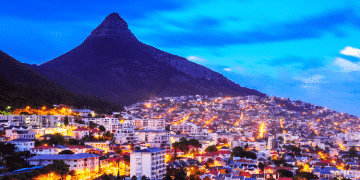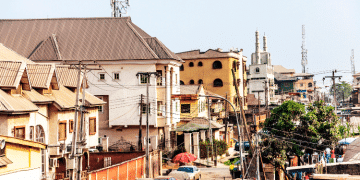Best Time to Visit South Africa: Season-by-Season Travel Guide for Safari and Cities
Introduction to South Africa’s Travel Seasons
South Africa, the southernmost country on the African continent, is renowned for its diversity—boasting everything from pristine beaches to sprawling savannas, urban landscapes, and serene deserts.
What makes South Africa especially appealing as a travel destination is its year-round suitability for travel, thanks to its wide range of climatic zones.
Diverse Climate Zones
South Africa’s climate varies significantly from one region to another.
Coastal KwaZulu-Natal has a subtropical climate, whereas the highveld regions like Gauteng experience summer rainfall with dry winters.
This variety allows visitors to tailor their trips based on their desired activities and preferred weather conditions.
Seasonal Breakdown
Travel seasons in South Africa can be broadly categorized into three periods: peak, shoulder, and low seasons.
- Peak Season (November to March): The peak season corresponds with South Africa’s summer, attracting many tourists. This period sees warm to hot weather, especially along the coasts, making it ideal for beach excursions, cultural festivals, and various outdoor activities. Because this is the busiest time of year, it requires advanced planning to avoid crowd-related inconveniences.
- Shoulder Seasons (March to May & September to November): The shoulder seasons are favored by many for their mild temperatures and fewer crowds. Autumn (March to May) offers pleasant weather and is perfect for combining visits to different regions, like Cape Town and Kruger National Park. Spring (September to November) features blooming landscapes and is ideal for nature enthusiasts looking to see flora and fauna.
- Low Season (May to September): During the South African winter, the low season unfolds. Not typically what one would expect from “winter,” daytime temperatures remain comfortable, though nights can be chilly. The low tourist numbers also translate to great deals on accommodation.
The Provinces of South Africa
Understanding South Africa’s nine provinces can help tailor your itinerary to make the most of what each has to offer:
- Western Cape – Known for the splendid city of Cape Town, beautiful beaches, and the Winelands.
- Eastern Cape – Home to the Garden Route and Addo Elephant National Park.
- Northern Cape – Features the arid Kalahari Desert and the blooming Namaqualand during spring.
- KwaZulu-Natal – Offers lush landscapes, the Drakensberg mountains, and a subtropical coastline.
- Gauteng – The country’s economic hub, including the cities of Johannesburg and Pretoria.
- North West – Known for the Pilanesberg Game Reserve and Sun City.
- Mpumalanga – Famous for the iconic Kruger National Park.
- Limpopo – Rich in wildlife and culture and part of the Great Limpopo Transfrontier Park.
- Free State – Dominated by farmlands and the scenic Drakensberg escarpment.
With this unique combination of seasons and diverse climates, South Africa ensures an unforgettable experience, whether you’re exploring its cities or immersing yourself in nature.
As you plan your visit, the next logical step will be to explore the specific offerings of each season in more detail.
Summer in South Africa (November to February)
Weather and Temperature
Summertime in South Africa, stretching from November to February, features an inviting array of weather conditions.

The coasts are predominantly hot and sunny, making them prime beach destinations.
Coastal temperatures generally hover between 77°F and 81°F (25-27°C). As you move north, the weather becomes more variable, with regions like the Western and Eastern Cape experiencing Mediterranean-like conditions.
In contrast, Northern areas such as Kruger National Park and KwaZulu Natal offer a lush, green landscape punctuated by occasional thunderstorms.
Regardless of where you are, prepare for a delightful mix of dry and humid weather.
Popular Summer Activities
- ✅Beach Vacations: With miles of stunning coastlines, South Africa’s beach destinations are fabulous during summer. Durban, Cape Town, and the Eastern Cape attract visitors with their sunlit shores, providing perfect spots for swimming, surfing, and sunbathing.
- ✅Whale Watching: November is prime time for the continuation of whale watching tours, particularly in places like Hermanus and the Garden Route, where you can still catch glimpses of these majestic creatures.
- ✅Cultural Festivals: The summer season is replete with colorful festivals. In January, you can immerse yourself in the Battlefields of Natal’s historical reenactments. Music lovers can groove at events like Up The Creek and We Love Summer.
Tips for Navigating Peak Season
Due to high tourism rates, booking in advance is pivotal during the summer months.
This ensures access to popular accommodations, tours, and events, avoiding the disappointment of fully booked schedules.
- ✅Plan Ahead: Secure accommodations, whale watching tours, and festival tickets early. December holidays see a significant rise in tourism.
- ✅Be Weather Ready: Pack light, breathable clothing suitable for the heat, and don’t forget rain protection for regions with occasional thunderstorms.
- ✅Travel Smart: Utilize local insights for navigating crowds and discover less-traveled sites for a more relaxed experience.
The summer surge turns South Africa into a vibrant playground of beach fun, cultural heritage, and awe-inspiring nature.
With careful planning, a summer visit promises a fantastic blend of activities and scenic beauty.
Autumn Travel Guide (March to May)
South Africa in autumn is a traveler’s dream come true.
As the heat of summer fades, the country enjoys mild temperatures ranging from 68°F to 73°F (20-23°C) with clear, sunny skies, making it perfect for exploring multiple regions in one trip.
Combining Regions: From Cape Town to Kruger National Park
Autumn is the ideal season to combine visits to different regions.
Cape Town and its surrounding areas, such as the Garden Route, are relaxed and beautifully sunny.
The Cape Winelands, in their harvest season, are lush and picturesque, an absolute haven for wine lovers. If you venture inland, national parks such as Kruger and Madikwe offer extraordinary wildlife spotting opportunities as the bush transforms.
Autumn in South Africa is also festival season.
Take part in the AfrikaBurn festival in Tankwa Karoo National Park, a unique event where creativity and art thrive in a temporary community.
Additionally, the Cape Winelands Harvest Festivals in Stellenbosch and Franschhoek celebrate the grape harvest with wine tastings, music, and delicious food.
Booking your tickets in advance for these events is a good idea to ensure you don’t miss out.
Ideal for Wildlife Viewing and Hiking
This season is perfect for wildlife enthusiasts and hikers alike.
Rivers and lakes in the bush are filled to the brim, drawing animals to the water and making wildlife viewing spectacular in national parks.
For those with a passion for hiking, the crisp and clear weather offers optimal conditions to explore trails in the Drakensberg Mountains and other scenic areas.
Autumn in South Africa is a blend of festive events, spectacular wildlife, and perfect weather conditions for exploration.
Up next, we’ll delve into another exciting travel season.
Winter Safari Season (May to September)
Prime Wildlife Viewing Opportunities
Winter in South Africa, stretching from May to September, offers some of the best wildlife viewing opportunities.
Kruger National Park and Madikwe Game Reserve are particularly renowned for their exceptional big game viewing during this season.
Pleasant Daytime Temperatures and Clear Skies
One of the best things about visiting South Africa during winter is the pleasant daytime temperatures.
With averages ranging from 45°F to 63°F (7°C to 17°C), the weather is quite comfortable for outdoor activities.
The skies are usually clear, providing perfect conditions for photography enthusiasts keen on capturing the stunning landscapes and abundant wildlife.
Evenings and early mornings can be quite chilly, so it’s essential to dress in layers.
Best Deals and Accommodation Options
Winter is considered the low tourist season in South Africa, which means fewer crowds and more opportunities to score great deals on travel and accommodation.
You can take advantage of discounted rates at popular safari lodges and hotels, allowing you to enjoy luxurious experiences at a fraction of the usual cost.
Additionally, national parks and reserves are less crowded, giving you a more intimate wildlife viewing experience.
Booking in advance is still recommended, as the best lodges can fill up quickly even during the low season.
Exploring South Africa in winter not only guarantees remarkable wildlife encounters but also offers a quieter, more relaxed travel experience.
It’s a prime time to enjoy the natural beauty and tranquility that this diverse country has to offer.
Spring Exploration (September to November)
Spectacular Natural Phenomena
South Africa effortlessly puts on a show each spring with the wildflowers of Namaqualand.
If you visit between September and November, you’ll be greeted by fields of vibrant daisies and other indigenous flowers.
Another natural wonder during this period is whale watching in Hermanus.
This seaside town offers the rare opportunity to sight southern right whales from the shore—no binoculars required!
These magnificent creatures migrate to the coastal waters for calving, making for an unforgettable spectacle.
Popular Festivals and Events
Spring is festival season across South Africa, and there’s an event for every taste.
Starting just outside Cape Town, the Rocking the Daisies festival melds music and camping for a three-day extravaganza.
The Durban International Blues Festival brings soulful tunes to KwaZulu Natal, while Johannesburg and Cape Town both host bustling Street Food Festivals, showcasing the rich culinary traditions of the regions.
And don’t miss the Hermanus Whale Festival, which mixes marine conservation with fun activities.
Balancing Temperatures with Optimal Sightseeing
Spring temperatures in South Africa hover between 15°C to 25°C (59°F to 77°F), making it one of the most comfortable seasons for exploration.
The weather can be variable, so pack layered clothing to adapt to both chilly mornings and warmer afternoons.
As the temperatures rise, sightseers find it’s the perfect time for outdoor activities, from hiking trails in the Table Mountain National Park to biking through the vineyards of Stellenbosch.
Spring isn’t just about the flowers and festivals, though. The gradual increase in temperatures means delightful conditions for safaris and city tours alike.
Spring showcases South Africa’s multifaceted charms beautifully.
Jumping into summer, it’s vital to plan ahead for a seamless and enjoyable trip.
Planning Your Visit: Essential Tips
Seasonal Packing Guidelines
When planning your trip to South Africa, it’s essential to pack according to the season and the regions you’ll be visiting.
South Africa’s diverse landscape and weather patterns necessitate thoughtful packing.
- ✅Summer (November to February): Summers can be hot and humid with temperatures ranging from 77°F to 81°F (25-27°C). Lightweight, breathable clothing such as t-shirts, shorts, and summer dresses are ideal. Don’t forget a hat, sunglasses, sunscreen, and swimwear for beach outings. Waterproof gear is beneficial for regions prone to thunderstorms like the north Best Time to visit South Africa.
- ✅Autumn (March to May): Autumn brings cooler, more comfortable temperatures, averaging around 68°F to 73°F (20-23°C). Pack a mix of short-sleeved and long-sleeved clothing. Light jackets and sweaters are useful for the crisp mornings and evenings. Hiking shoes are a must for outdoor activities Best Time to visit South Africa.
- ✅Winter (May to September): Winter temperatures can drop to between 45°F and 63°F (7-17°C) during the day, requiring warm layers. Include thermal underlayers, long pants, and warm sweaters or jackets. Comfortable, sturdy walking shoes are beneficial for safaris, and a hat and gloves may be needed for early morning game drives Best Time to visit South Africa.
- ✅Spring (September to November): Spring can have variable weather with temperatures ranging from 57°F to 77°F (14-25°C). Layered clothing is best to accommodate the mix of warm and cool days. Include a windbreaker or light jacket, and don’t forget your camera to capture the stunning wildflowers and whale watching moments Best Time to visit South Africa.
Booking Recommendations
Peak tourist seasons, especially summer, require advance planning and reservations to secure the best accommodations and activities. Here’s how to manage your bookings:
- ✅Peak Season (November to March): Book as early as possible, ideally several months in advance. Popular destinations and activities, such as whale watching tours and beachside hotels, fill up quickly during this time Best Time to visit South Africa.
- ✅Shoulder Seasons (March to May and September to November): These periods offer more flexibility. However, for special events like AfrikaBurn or the whale festivals, advance booking is still advisable.
- ✅Low Season (May to September): Winter travel is less crowded, and you can find excellent deals on both accommodations and safaris. Although spontaneous travel is more feasible, booking accommodations and safaris in advance can still ensure the best options Best Time to visit South Africa.
| Season | Travel Combinations |
|---|---|
| ☀️ Summer | Pair beach vacations in Durban or Cape Town with wine tasting in Stellenbosch. |
| 🍂 Autumn | Combine a visit to Cape Town with a safari in Kruger National Park and enjoy harvest season activities in the Cape Winelands. |
| ❄️ Winter | Ideal for safari enthusiasts with clear skies and optimal wildlife viewing. Combine a visit to the Drakensberg Mountains with whale watching in Hermanus. |
| 🌸 Spring | Experience the blossoming flowers in Namaqualand and the cultural vibrancy of Johannesburg and Cape Town. |





